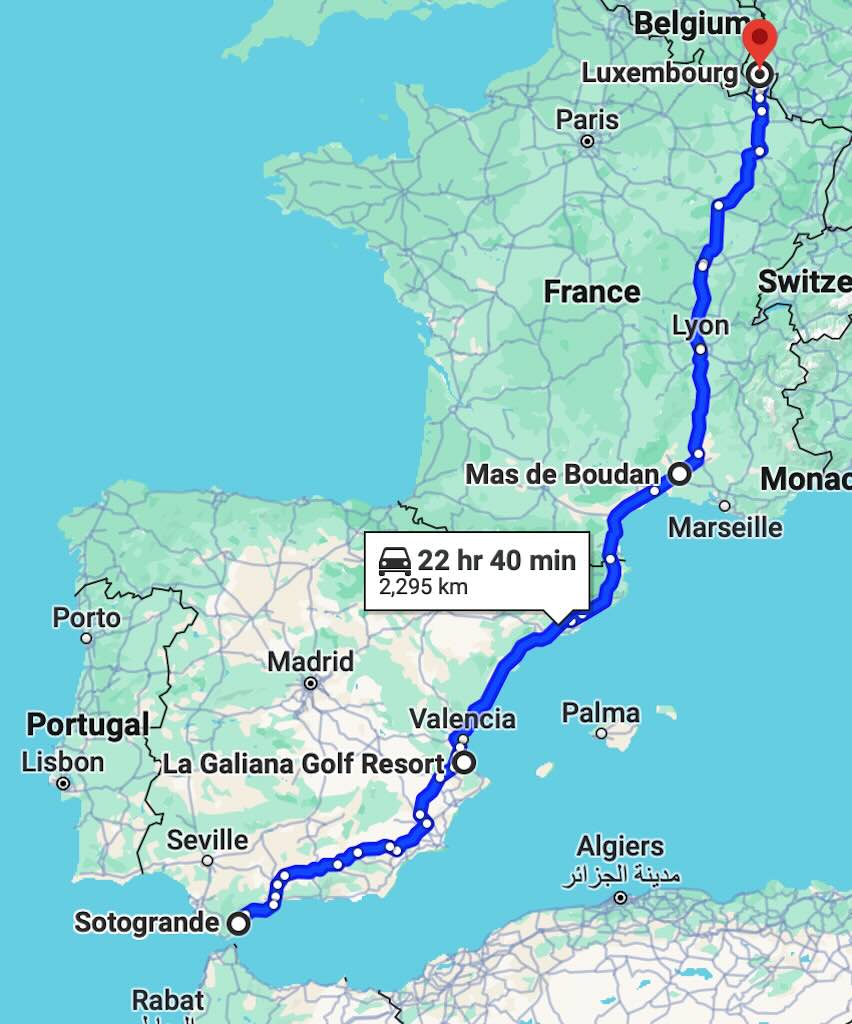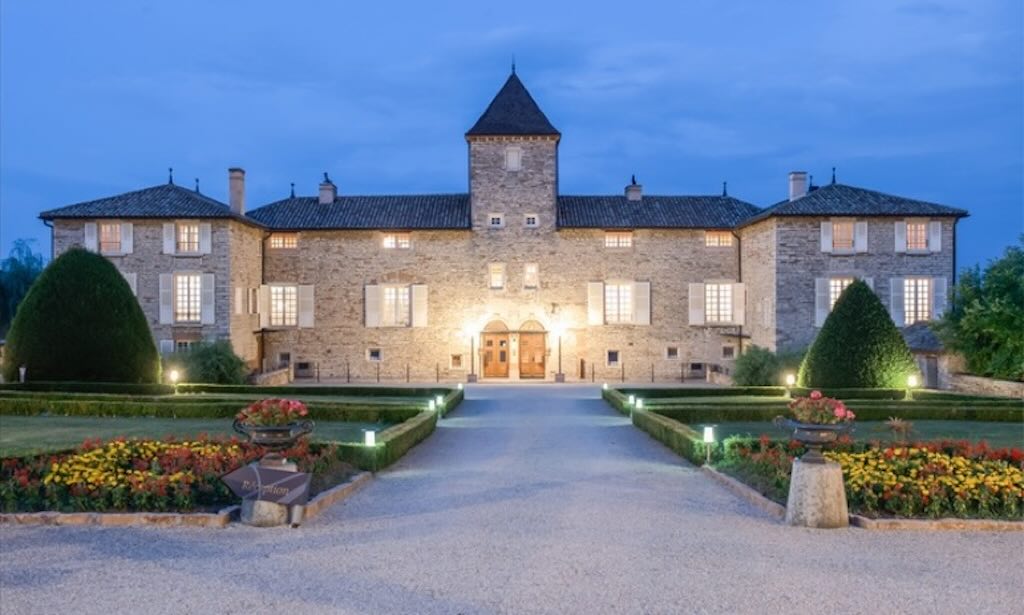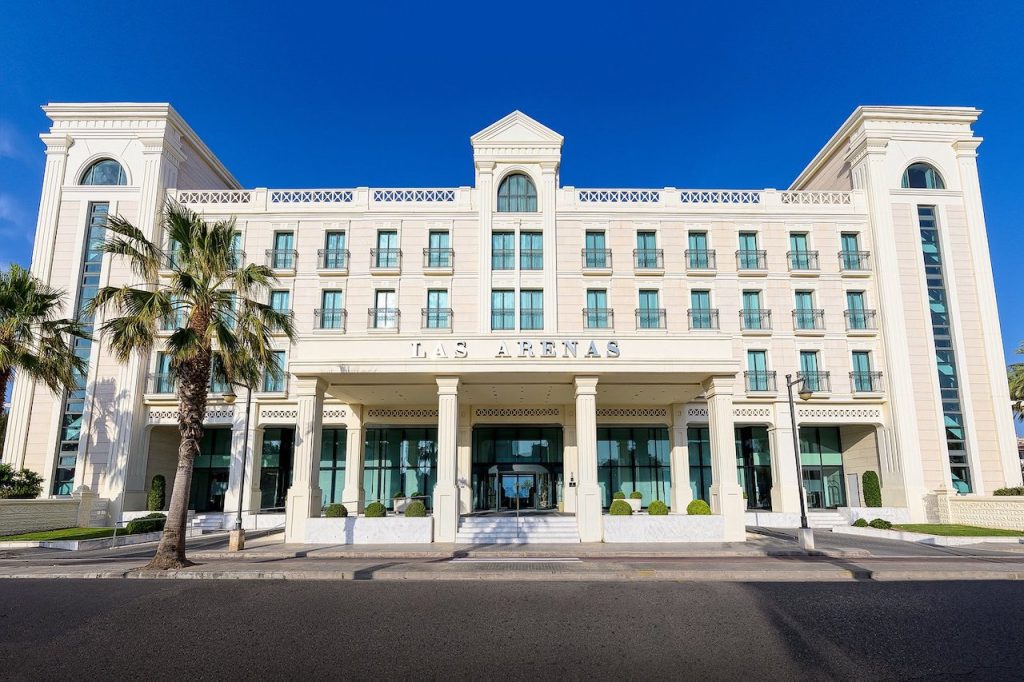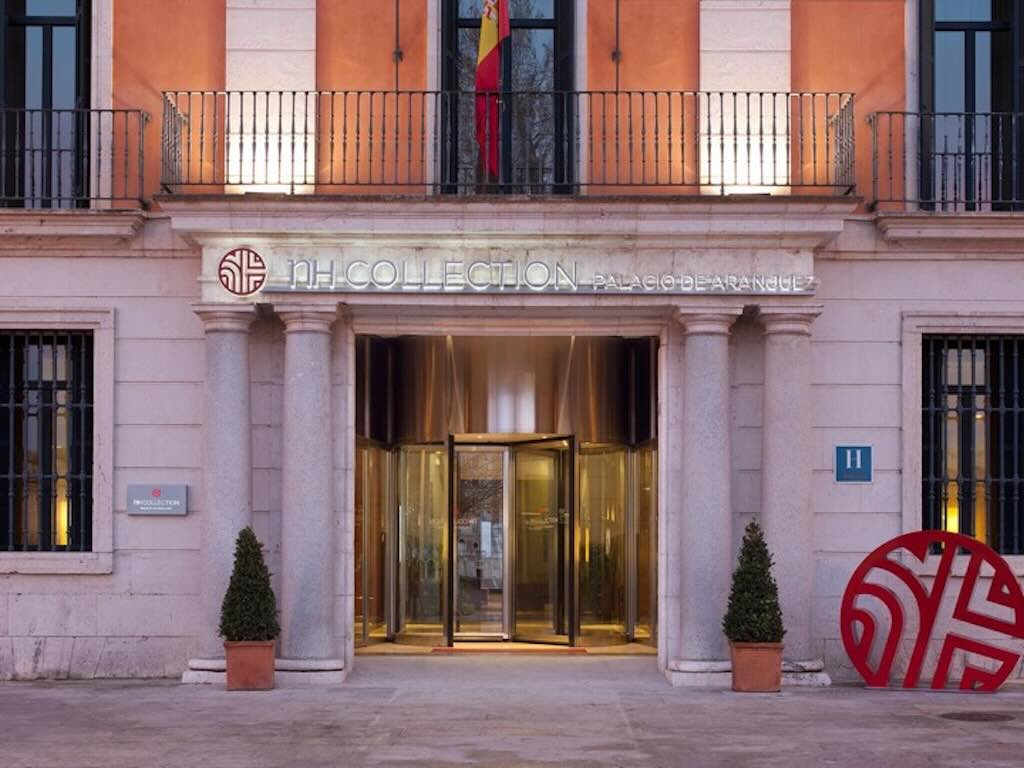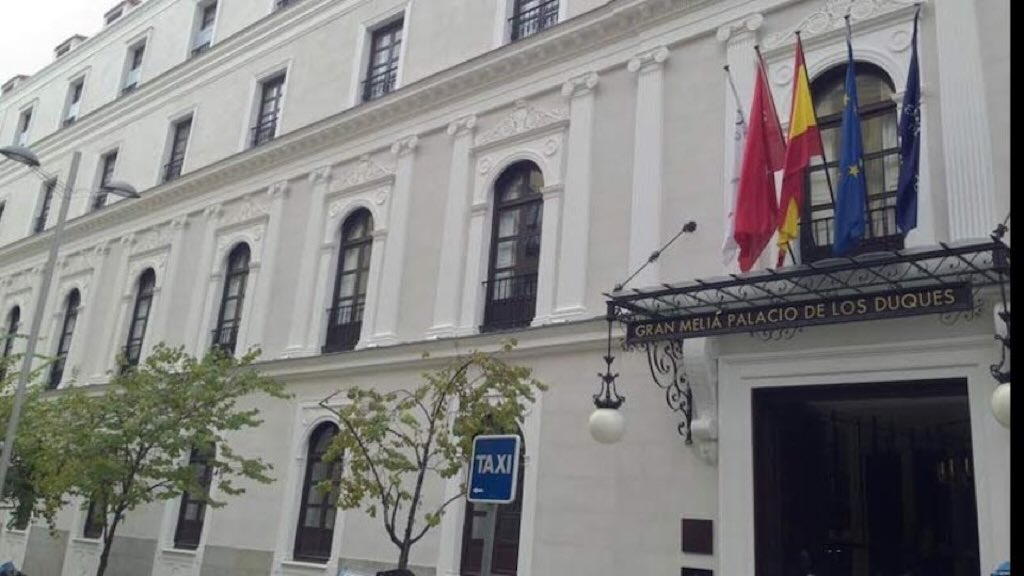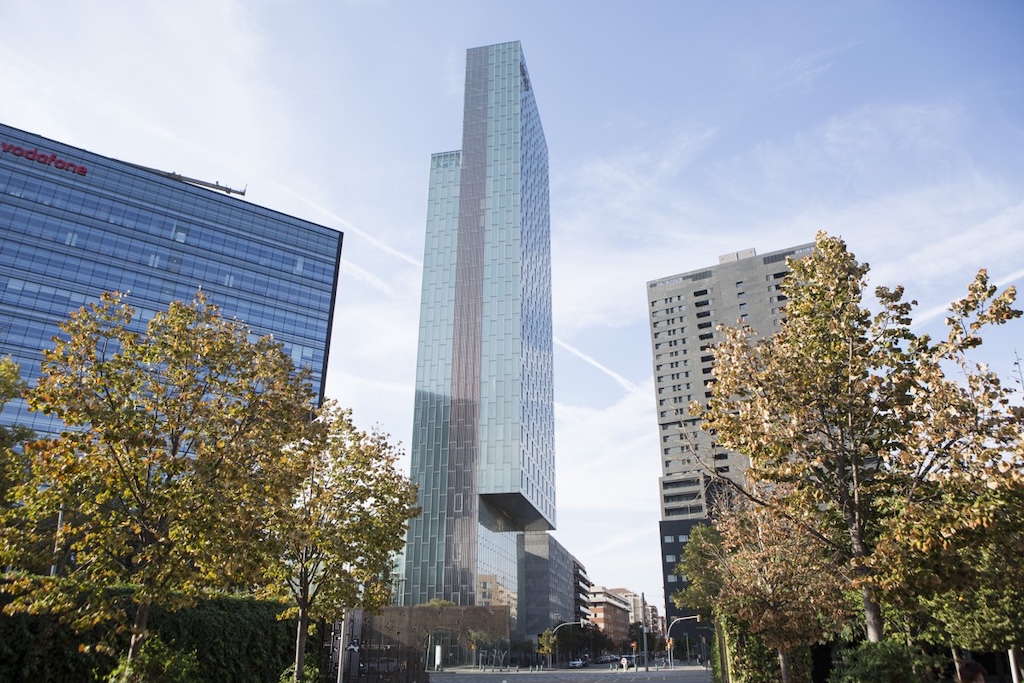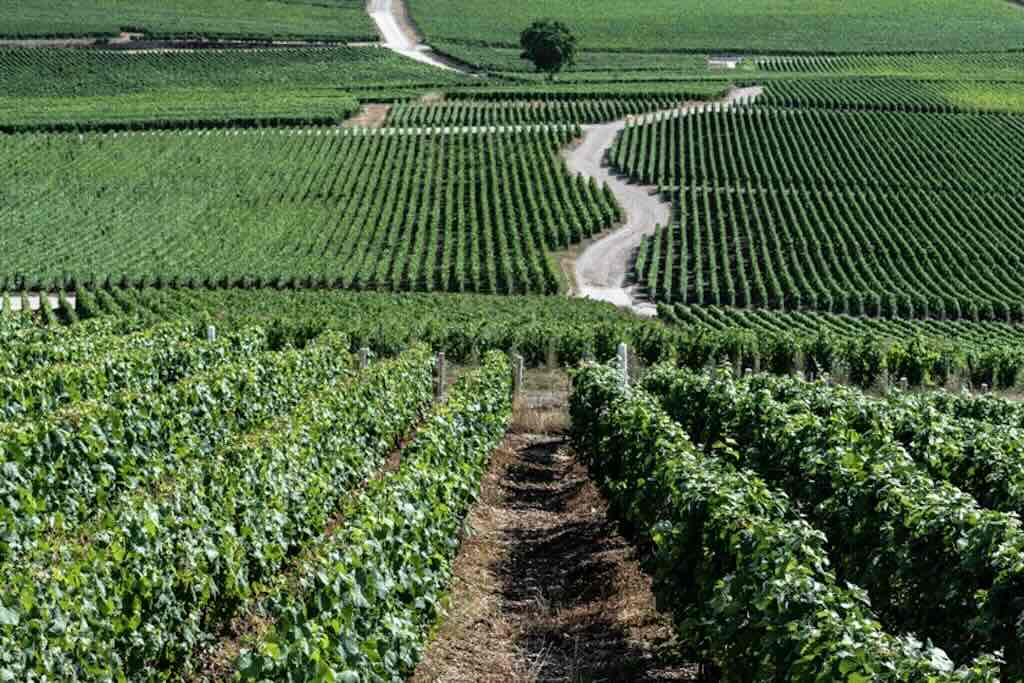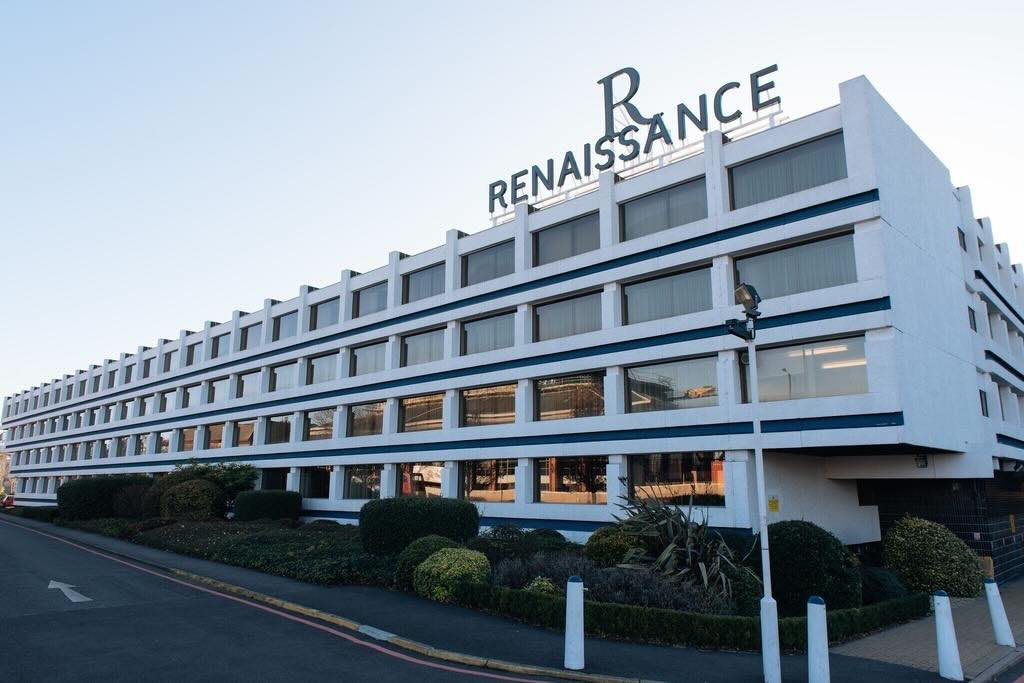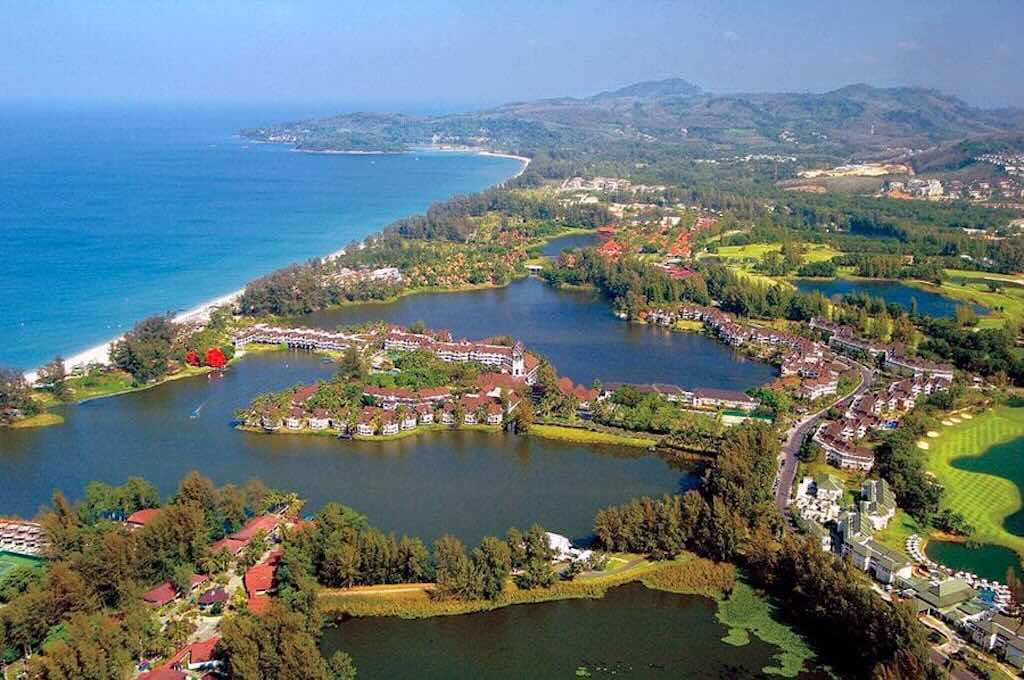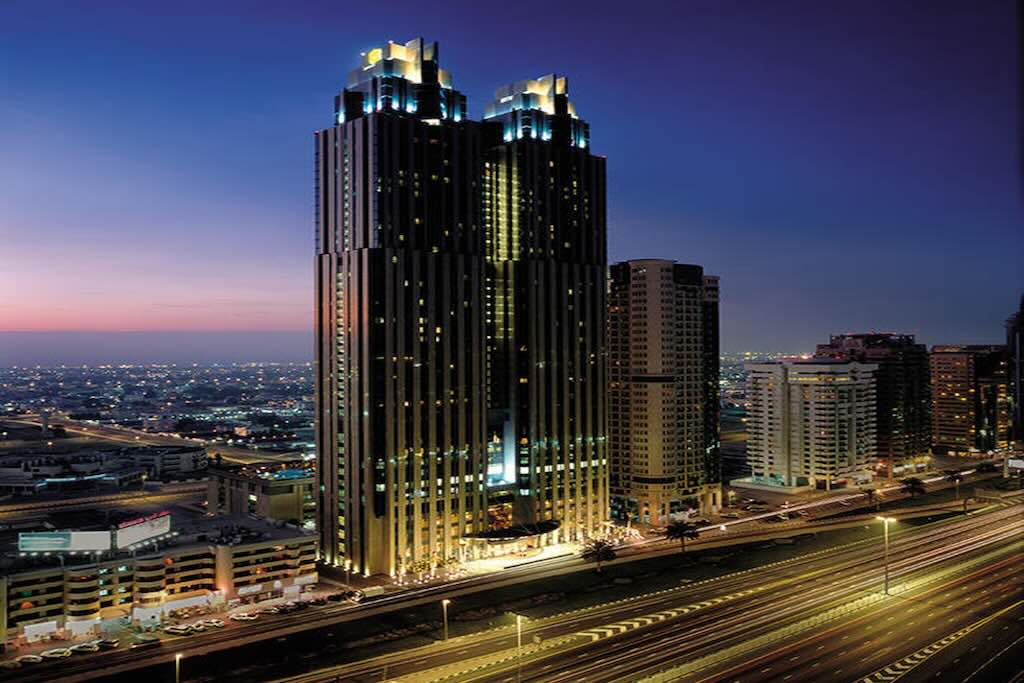When I drove south in the spring of 2024 it was the saddest trip I had ever taken. My wife Monique, the light of my life, had left me on the 23rd December 2023 at 17:00. It was a very lonely and heartbreaking trip.
Now in June 2024 I would drive north again, alone. That sadness had never left me, and in many ways it was more intense as I slowly realised that nothing will ever be the same.
From a practical view point I intended to leave Andalusia, stopping only at La Galiana Golf Resort, La Barraca d’Aigües Vives, near Valencia in Spain, and then at the Mas de Boudan in Nîmes, France, before arriving in Luxembourg.
The total distance was around 2,460 km, meaning three more-or-less equal stages of about 820 km per day.
This time there were a number of minor surprises on my way north.
Arriving at La Galiana Golf Resort
I used TomTom on my iPhone, blindly. This was a mistake. I always check out addresses and routes before travelling, but I mistakenly thought that I was simply going north along southern part of the route I had used for my Spring Roadtrip 2024 down to Andalusia.
In my spring 2024 roadmap south to Andalusia, I had stayed at La Galiana Golf Resort. I was very happy with the location and the hotel, and decided to stay there again. I had used TomTom on my iPhone, so I expected that it would more or less adopt the same route, i.e. the costal autopista AP-7 and then inland on the CV-50. In spring 2024 the TomTom had taken me south on the AP-7 when I had left La Galiana.
My first mistake was to not check what might have been the alternatives when now driving north from Andalusia.
I would have seen that the fastest proposed route was to initially use the AP-7, but to then to take the AP-46 and A-92 from Malaga to Guadix, via Granada. Then it would be the N-342, A-92N, A-330, RM-730, RM-714, N-344 (Almería–Alcantarilla–Fuente Encarroz), A-33 (Autovía Cieza-Font de la Figuera), A-35 (Autovía Almansa-Xàtiva), before finding again the A-7 (Autovía del Mediterráneo) and finally the CV-50 (but travelling from inland toward the sea). This route was indicated as 668 km and taking 7 hours 17 minutes.
As an aside there is often the mention of autopista and autovia. Both are divided highways with full access control and at least two lanes per direction. But autopistas are specifically reserved for automobile travel (minimum speed limit of 60 km/h), and many, but not all, are toll roads (so with a AP- header). Autovías are usually (though not always) upgrades from older roads, are always free (no tolls), and can be used by slower vehicles like bicycles and agricultural machinery.
Had I looked at this route I would immediately have check alternative “simpler” routes. One alternative would have been (after Guadix) to take the N-342, A-91 (Puerto Lumbreras–Vélez Rubio), and A-7 through to Mercia, and either continue with the A-30 (Autovía de Murcia), A-33, A-35, A-7 and CV-50 (700 km and 7 hours 23 minutes), or take the E-15 (which is just the A-7 or AP-7), A-7, E-903, A-33, A-35, A7, and CV-50 (712 km and 7 hours 23 minutes). Both look complicated, but are in fact quite straight forward road links that I had used in the past.
The E- for motorways is the international E-road network numbering system for roads in Europe developed by the United Nations Economic Commission for Europe (UNECE). Naturally the United Kingdom does not show the European designations on its road signs.
I might add that I have also occasionally adopted the AP-7 along the coast, a longer route but far more interesting with its coastal views (753 km and 7 hours 59 minutes). This is the route that I would have taken with Monique, since she always like the sea views. On this autopista I could maintain an elevated average speed, and certain cut the time by anything between 30-50 minutes (but it is a toll road). I think this is the route I should have taken.
The strange thing is that the TomTom did not take the shortest route, but guided me along the N-342, A-91, and A-7 through to Mercia. Which was fine, but it then threw a spanner in the works. The TomTom took me along the A-30 with the intention to join the RM-714 (and not take the A-33). But the entry to the RM-714 was closed. Now the problem was that I was stuck on a road towards Albacete, and a trip across country to find the N-344 and finally the A-33. I was not alone, there was some traffic on this route included numerous lorries. I lost at least 20 minutes on this deviation.
Spanish secondary highways are named with a code referring to the provinces, for example, CV- stands for Comunitat Valenciana, and RM- for Murcia.
But this was not the end of the story. The next mistake was my fault. I realised later that the TomTom was not programmed to find the actual La Galiana hotel and golf course, but to find a small town on the CV-50 nearer the coast.
Arriving from inland meant that the TomTom programmed a route along the CV-600.

As seen above this is a very windy road along the foothills of the Serra del Buixcarró (it takes 31 minutes to drive 24 km).
So overall my mistakes with TomTom certainly cost me at least an addition 40 minutes on my travel time. In reality it didn’t make much difference because I still had to wait until my room was ready.
One really irritating feature of TomTom
TomTom, like other GPS systems, has a very useful text-to-speech output. I use one of the female pre-installed standard voices. As far as I know this is based upon the AVFoundation framework.
Now an abbreviation is a truncated word, for example, a type of acronym made up of parts of the phrase it stands for and is pronounced as a word (AIDS, Scuba, NASA). Whereas an initialism is an acronym that is pronounced as individual letters (D-N.A, I-B-M, U-S-A).
I’ver mentioned that some of the roads I used were named CV-, standing for Comunitat Valenciana.
Logically the CV should be pronounced as an initialism, e.g. two separate letters C-V. However, TomTom tries to pronounce it as a single word, which just sounds weird and a bit irritating if repeated several times.
Breathalysed for the first time ever
I left my Spanish hotel immediately after breakfast, and was on the road by 07:30. Approaching a roundabout just before joining the autovia I was stopped by a guardia civil.
He breathalysed me, before 08:00 in the morning. This was the first time I have ever been breathalysed. I had to remove a mouthpiece from its transparent plastic packaging, insert into the handset, take a deep breath and blow strongly into the mouthpiece.
The result was naturally negative. It was all very relaxed. He then went on to ask about my car, and where I was driving from (Andalusia) and too (Luxembourg). He wanted to know why I was leaving Spain in the summer. I told him there were too many Madrileños in Andalusia in the summer. He laughed, said he understood me, saluted, and told me to have a safe trip.
I have a subscription to Bip&Go, a French company that markets an electronic toll subscription service. It’s very useful because its valid in France, Spain, Portugal and Italy.
This trip highlighted a few anomalies.
On the AP-7 through Estepona-Marbella-Malaga there is a dedicated 30 km/h “Via-T” lane, as well as detectors on many other toll lanes (indicated with a “T”). In the past my badge always worked, if a bit slow. I learned to drive very slowly through the lane entry, whilst others appear to drive straight through. I put this down to the location of Big&Go badge on my windscreen, since there is only a very small aperture allowed (right side of read-view mirror). But this time I was systematically rejected. What happened was that I was then deviated to two separate dedicated credit-card gates. But also systematically in the time it took to get my credit-card and open the window, these secondary gates detected my Bio&Go token and opened automatically. Like I wrote, irritating.
The next irritation occurred when joining the French motorways at Nîmes and again after Lyon. At the “T” gate it would not appear to recognise my Bip&Go, forcing me to take a toll cards. This meant that I would have to pay when leaving the toll motorway. In each case I approached the payment booth, with the toll card and my credit-card, and in both cases before I could pay the barrier was raised and I could continue. In one case it actually appears to wait until I had inserted the toll card, but then the barrier opened before I could insert my credit-card.
Frankly I have no idea if all these tolls will be charge to my Bip&Go account. Something to check in the coming month.
Two additional minor problems
The first minor problem was torrential rain from south of Barcelona through to into France. At time visibility was very poor, and I had to reduce speed to around 70-80 km/h. I was impressed that in Spain everyone appears to drive cautiously, whereas in France there was the occasional idiot driving at 120-140 km/h despite the heavy rain.
The second minor problem was traffic jams in France on the way north. It was a Saturday-Sunday, so I had expected that there would be, as predicted, intense traffic going south. But I was surprise to find a lot of traffic going north.
